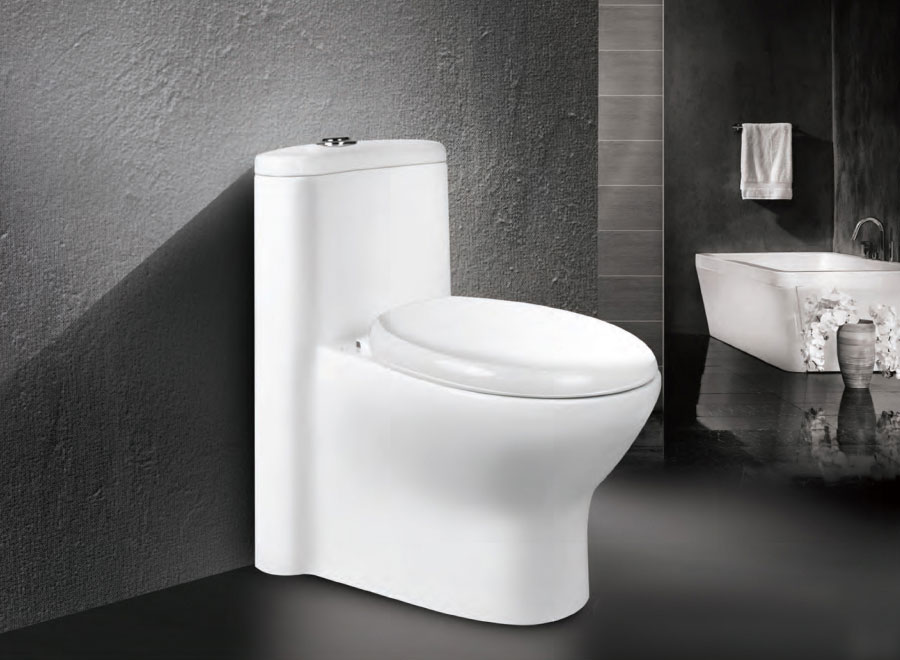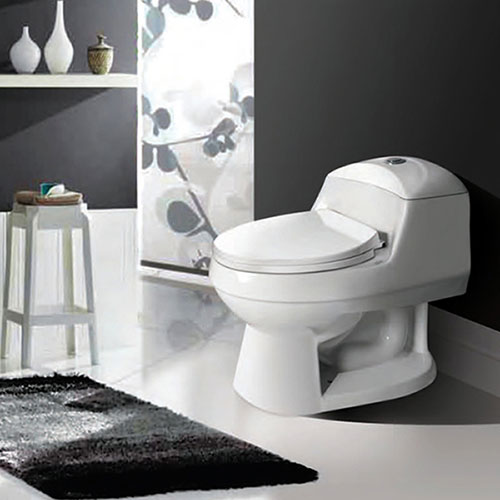Texapon N70 is a sodium laureate sulfate commonly used in medium to high viscosity clear pearlescent products and detergent products. Texapon is a highly active ether sulfate produced from a medium fatty alcohol containing an average of 2 moles of ethylene oxide with maximum control of unwanted byproducts, including odor-causing products.
Texapon N70 is a highly concentrated sodium lauryl ether sulfate derived from natural fatty alcohols. Texapon is particularly suitable for highly concentrated end products or when raw materials with a lower water content are required due to the high leaching content of the active ingredient. In this way, the viscosity of diluted texapon solutions with approximately 5 to 28% washing active ingredient can be easily increased to the desired amount. Its other anions include sodium laurate sulfate and sodium myrate sulfate.
SLES or Texapon N70 acts as a foaming, cleansing and moisturizing agent. Most detergent products contain 30-70% SLES. Texapon N70 is a paste that has a high viscosity and its appearance is transparent. Because this product contains salt, after diluting it, the viscosity decreases. By increasing NaCl and alkanol amides, the viscosity of this compound can be controlled. N70 type of this product is the highest concentration of SLES produced in the ethoxylation process of dodecyl alcohol.
| Product Name |
Sodium ether lauryl sulfate 70% |
| The amount of active ingredient |
94% |
| Minimum pH (1% aqueous solution) |
8.5 – 10.5 |
| Percentage of sodium sulfate |
Maximum 1.5 percent |
| Percentage of sodium chloride |
Maximum 0.5% |
| Percentage of sulfate-free material |
Maximum 2 percent |
| chemical formula |
NaC12H25SO4 |
| Humidity |
Maximum 3 |
| Molecular weight |
288.4 g/mol |
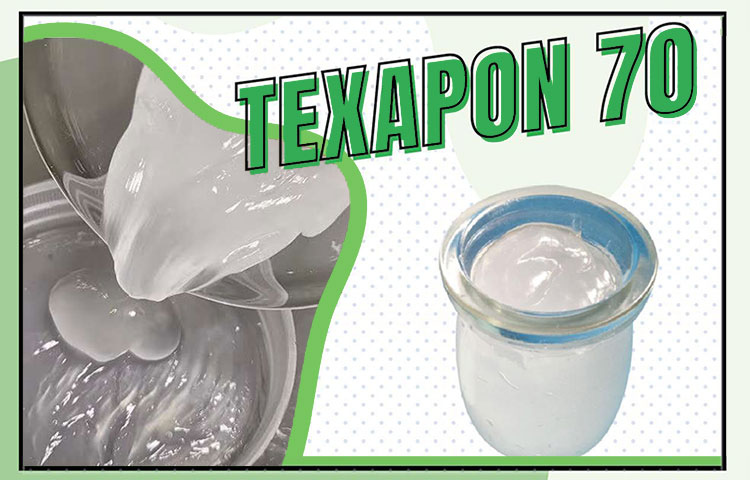
Click on the link below to read more:
Texapon N70 - Sodium Lauryl Ether Sulfate (SLES)
Xylene is a colorless, volatile, sweet-smelling, flammable liquid that is insoluble in water and remains on its surface when mixed with water. Xylene consists of two methyl groups attached to the six-carbon ring of benzene, therefore it is also called dimethylbenzene.
Xylene is a term used for the mixture of three isomers of xylene, i.e. Ortho-Xylene, Meta-Xylene, and Para-Xylene we have explained each one specifically in other articles.
This material is mainly used as a solvent and is used in the printing, rubber, and leather industries and can replace toluene in places where slower drying is required. This chemical is primarily a synthetic chemical. However, it occurs naturally in oil, and coal, and is produced during forest fires.
Xylene is an aromatic hydrocarbon widely used as a solvent in industry and medical technology. The chemical formula of this compound is C6 H4 (CH 3) 2. This compound is found in small amounts in jet fuel, gasoline, and cigarette smoke.
The chemical and physical properties of xylene are different according to the respective isomers. The melting point of this compound varies from -47.87°C (m-Xylene) to 13.26°C (p-Xylene). Typically, the melting point of the para isomer is much higher because it easily fits into the crystal structure. The boiling point of each isomer is around 140°C (284°F).
The density of each isomer is about 0.87 g/ml, and as a result, it has a lower density than water. This chemical in the air can be identified by the smell in concentrations from 0.08 to 3.7 ppm, and in water with a concentration of 0.53 to 1.8 ppm, its sweet taste can be recognized.
Xylene, often called xylol, is a powerful chemical solvent. This substance is derived from petroleum and therefore has certain advantages over other similar products.
It may seem odd, but solvents are chemical composites that are molecularly similar to the substances they are designed to dissolve. Since xylene is made from petroleum, it is especially good at removing paints, wood stains, and other synthetic products without damaging surfaces. It also acts as a solvent with compounds used on metals to prevent rust. Other materials that xylene will dissolve include a variety of adhesives and putty, as well as grease, glazes, resins, and waterproofing materials.
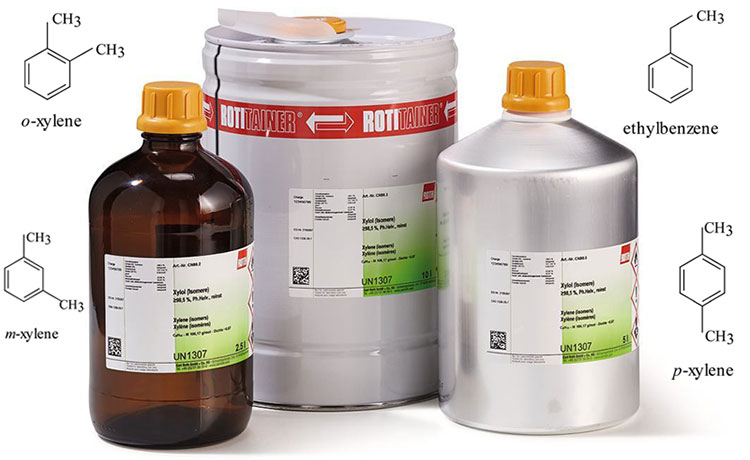
Click on the link below to read more:
Xylene
This substance is a strong acid known by names such as sulfamidic acid, amidosulfonic acid, amidosulfuric acid. Sulfamic acid has the ability to form sulfamate salt. In terms of appearance, it is a crystalline white powder with fine and shiny particles and has the chemical formula (H3NSO3). This substance is completely soluble in water. The melting point of sulfamic acid is 205 degrees Celsius.
This material is an almost strong acid with a molecular weight of 97.10 g/mol. This material is non-toxic, non-volatile and odorless and is not considered as a dangerous compound. It actually looks like wet snow.
| Product Name |
Sulfamic acid |
| Molecular formula |
H3NSO3 |
| Molar mass |
97.10 g/mol |
| Density |
2.15 g/cm3 |
| Melting point |
205 °C |
| Solubility |
Soluble in water and alcohols, acetone and nitrogen-based substances |
In terms of chemical structure, sulfamic acid is an intermediate compound between sulfuric acid and sulfamide. Sulfamate compounds are also derivatives of this material. This acid is one of the simplest sulfamic acids, which consists of a single sulfur atom. This sulfur is connected to two oxygen atoms by covalent bonds with hydroxide and amino groups and by double bonds.
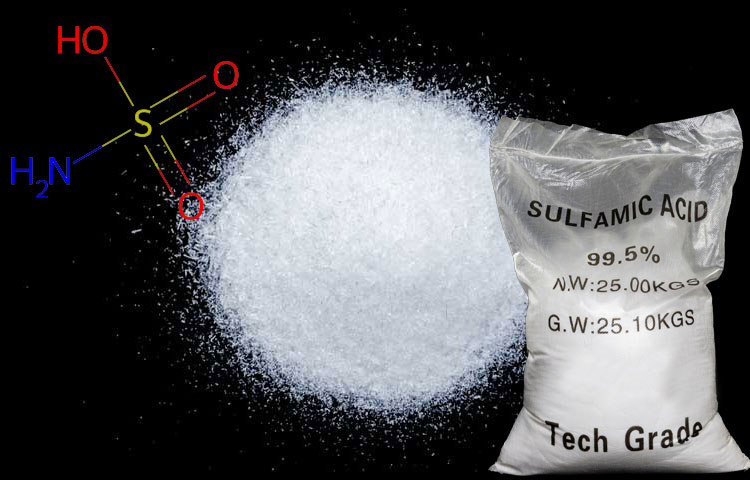
Click on the link below to read more:
Sulfamic acid
Texapon is a white or yellow semi-transparent paste with a mild odor, which is sodium lauryl ether sulfate. It has good foaming properties, but the foam is light and not creamy. It is part of cosmetic and medicinal raw materials. This product is supplied in 110-200 kg barrels and exported in bulk.
Texapon is used in detergents to create foam and bubbles. Texapon acts as a basic surfactant and easily thickens with salt. This stable compound is derived from natural fatty alcohols that have a high molecular weight and waxy content.
In fact, in general, there are four types of anionic, cationic, nonionic and amphoteric surfactants, where Texapon is an anionic surfactant with excellent performance and no color. Sodium Lauryl Ether Sulfate (SLES) has excellent detergent, emulsification and plasticity properties. Texapon, sodium lauryl ether sulfate (SLES N70) is a colorless or light yellow viscous paste liquid that is odorless and easily soluble in water.
The content of Texapon is very low in salt and it has a very low viscosity when it is watery or diluted with water to the concentration of normal use. But we can adjust the viscosity by adding sodium chloride and appropriate alkanol amides. This product is marketed with two concentrations of 30 and 70%.
| Product Name |
Texapon |
| Chemical formula |
CH3(CH2)10CH2(OCH2CH2)nOSO3Na |
| Molecular weight |
288.38 g/mol |
| pH |
Neutral equivalent to 7 |
| Density |
1.05 g/cm³ |
For each ethylene oxide group received, the amount of 44.05 g/mol is added to the molecular weight of Texapon. Therefore, for the sodium lauryl ether sulfate molecule that has 3 ethylene oxide groups, the molecular mass is calculated as 420.54 g/mol.
Texapon has excellent inhibition, emulsification and plasticity. This chemical substance dissolves easily in water. It is also resistant to hard water and high biological decomposition.
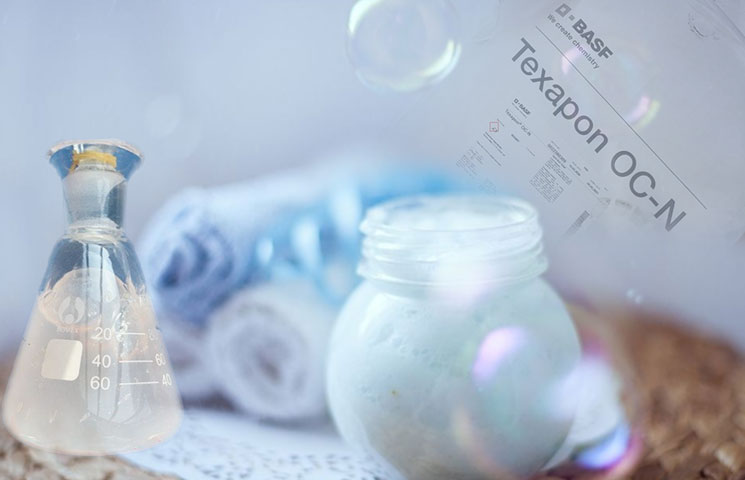
Click on the link below to read more:
Texapon
Paraxylene is a clear liquid with a sweet smell that has irritating vapors. The density of this substance is less than water and it is insoluble in water. Paraxylene is used to make plastic bottles and polyester fibers.
Paraxylene or para-xylene or p-xylene, abbreviated as PX, is an aromatic hydrocarbon derived from benzene. Paraxylene is toxic and flammable at room temperature. This substance is naturally present in gasoline and coal.
This compound has the largest volume of xylene isomers and 98% of it is used in polyester production, especially for the production of fibers, film, and polyethylene terephthalate (PET). Currently, the paraxylene supply market is witnessing significant growth with the increase in the consumption of pure acid terephthalate (PTA).
The paraxylene market has experienced strong growth with the increase in the use of PTA in the manufacture of polyester. Demand for DMT is slowly declining as polyester producers prefer the economical PTA route, although demand for DMT is increasing in the production of engineering polymers such as polybutylene terephthalate.
In Asia, most of the growth in polyester is related to fiber, which accounts for almost two-thirds of global demand. This fabric is used to make clothes and household items such as bedspreads, curtains, and fabrics.
However, this decline has been offset by strong growth in the PET bottle resin market, which now accounts for more than 30% of global polyester demand. This growth is mainly due to the replacement of glass in soft drinks and mineral water bottles. PET has also found applications in additional markets such as sports drinks, fruit juices, and food products such as oils, sauces, and dressings.
Paraxylene is used as a raw material for the production of other industrial chemicals, especially terephthalic acid (TPA), pure terephthalic acid (PTA), and dimethyl terephthalate (DMT). TPA, PTA, and DMT to produce polyethylene terephthalate (PET) polyesters. Bottles made of PET plastic are widely used as containers for water, soft drinks, and other beverages. Because PET is lightweight, shatter-resistant, and strong. In addition, PET helps retain gas in carbonated beverages. Because it has strong carbon dioxide-blocking properties.
Other uses of PET include:
- containers for cosmetics,
- Other cosmetics consumables,
- curtain fabrics,
- cover and clothing,
- film for x-rays,
- magnetic tape,
- Photographic film and electrical insulation,
- and packaging for welding bags,
- processed meats,
- Small films.
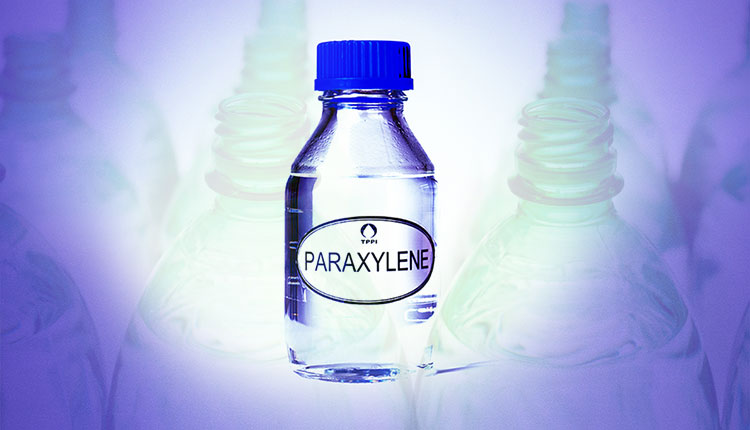
Click on the link below to read more:
Paraxylene
Polypropylene, abbreviated as PP, is a thermoplastic composite polymer made from a combination of propylene monomers.
This product has different types and depending on its application, it is produced in different grades such as raffia, medical, etc. In the following text, the necessary information for the preparation of the product, as well as additional information about the production method, types, different applications, etc., are mentioned.
Polypropylene is the second most widely used thermoplastic from the polyolefin family. PP is a versatile material that integrates properties such as lightness, strength, high heat resistance, rigidity, and flexibility. Polypropylene is molecularly a linear hydrocarbon resin whose chemical formula is C3H6.
Polypropylene is generally produced from propylene using the Ziegler-Natta polymerization method or metallocene catalysis. Polypropylene production starts from crude oil, where the crude oil is distilled and the naphtha cut is separated from it. Then naphtha is subjected to a cracking process, this process happens when naphtha is used as feed in petrochemical steam crackers.
- Low density (0.9 – 0.91 g/cm3)
- Destructive resistance to environmental stress
- High tensile strength
- High rigidity
- Polypropylene is easily available and relatively cheap.
- PP has high bending due to its semi-crystalline nature.
- PP has a relatively slippery surface.
- PP is very resistant to moisture absorption.
- PP has good chemical resistance in a wide range of acids and bases.
- PP has good fatigue resistance.
- PP has good impact strength.
- PP is a good electrical insulator.
- Good mechanical strength
- Good molding properties
- Odorless and non-toxic
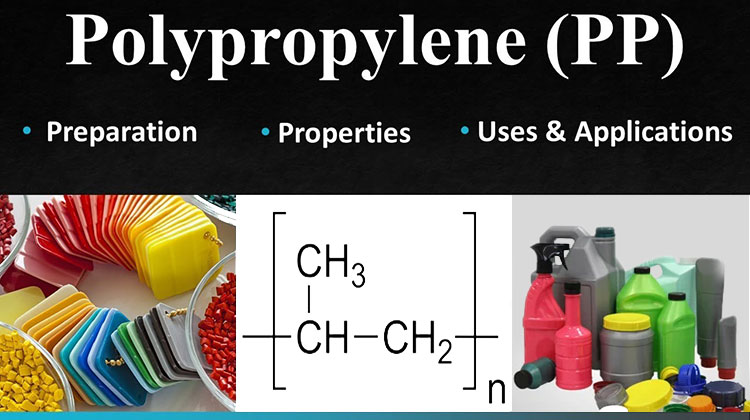
Click on the link below to read more:
Polypropylene
Oleic Acid is a fatty acid that is naturally present in various animal and vegetable fats and oils. This acid is an odorless and colorless oil, but commercial samples are yellowish or brown.
Chemically, oleic acid is classified as an unsaturated fatty acid. The name oleic is derived from the Latin word oleum meaning oil. Oleic acid is the most common fatty acid in nature. Oleic acid salts and esters are called oleate.
Oleic acid is the most common unsaturated fatty acid in nature. Fatty acids (or their salts) are often absent in biological systems as such. Instead, fatty acids such as oleic acid exist as their esters, usually triglycerides, which are the fatty substances of many natural oils.
This substance is found in fats (triglycerides), membrane-forming phospholipids, cholesterol esters and wax esters. Oleic acid is the most common omega-9 fatty acid and the most common unsaturated fatty acid. Oleic acid is the most abundant fatty acid in human adipose tissue, and is generally the second most abundant in human tissues after palmitic acid.
Oleic acid triglycerides make up the majority of olive oil. Oleic acid makes olive oil inedible. Also 59-75% pecan oil, 61% canola oil, 67-36% peanut oil, 60% macadamia oil, 20-80% sunflower oil, 15-20% grape seed oil, buckthorn oil, 40% sesame oil, and 14% of poppy seed oil is also composed of oleic acid. This substance is present in many animal fats and it makes up 37-56% of chicken and turkey fat and 44-47% of pork contains oleic acid.
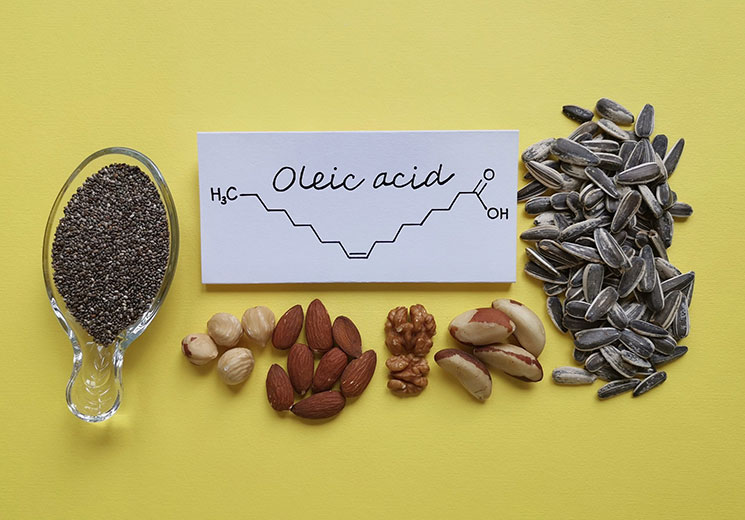
Click on the link below to read more:
Oleic Acid
Formic acid, ant essence or systematically methanoic acid, is the simplest carboxylic acid and has the chemical formula HCOOH. This substance is an important intermediate in chemical synthesis and is produced naturally. The word “formic” is derived from the Latin word for ant, formica, which indicates the distillation of the ant’s body. The ester, salt and anion of formic acid is called formate. Industrially, formic acid is produced from methanol.
Some alchemists and naturalists knew that anthills gave off acid fumes as early as the 15th century. The first person to describe the isolation of this substance (by distillation of large numbers of ants) was the English naturalist John Ray in 1671. Ants secrete formic acid for attack and defense purposes.
Formic acid was first made by the French chemist Joseph Guy Lussac from hydrocyanic acid. In 1855, another French chemist, Marcelin Bertrelot, produced formic acid by synthesizing carbon monoxide.
Formic acid has long been considered a chemical compound of little interest in the chemical industry. By the late 1960s, significant quantities became available as a byproduct of acetic acid production. Now this substance has increased as a preservative and antibacterial agent in animal feed.
Formic acid is named after ants that have a high concentration of the compound in their venom. In ants, formic acid is derived from serine via an intermediate. Formic acid‘s conjugate base, formate, also occurs widely in nature. The method for measuring formic acid in body fluids, which is designed to determine formate after methanol poisoning, is based on the reaction of formate with bacterial formamide dehydrogenase.
Formic acid is flammable at a concentration of 85%. Formic acid contains 53 grams per liter of hydrogen at room temperature and atmospheric pressure, which is three and a half times what compressed hydrogen gas can achieve at a pressure of 350 bar. Pure formic acid is a liquid whose flash point is +69°C, much higher than that of gasoline (-40°C) or ethanol (+13°C).
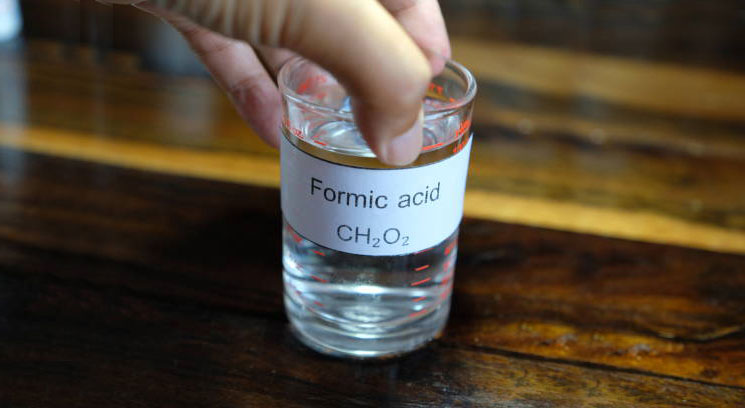
Click on the link below to read more:
Formic Acid
Polyethylene granules are one of the most popular thermoplastic materials and the most widely used materials in many plastic product manufacturing industries today. Polyethylene is used in producing films, water, sewage pipes, plastic parts, and various sectors such as packaging, automobile manufacturing, electricity, etc. Linear Low Density Polyethylene is a type of light polyethylene, a semi-hard and semi-transparent polymer used in various industries and the production of multiple products due to its features and functional properties. From a chemical formula point of view, it’s known as LLDP 22B02. In the following, you will get to know more about its features and specifications.
This type of transparent light polyethylene has features such as flexibility, chemical resistance, and waterproofing, which is an essential characteristic of LLDP 22B02.
| Attributes |
Amounts
|
| Tensile strength |
0.20 – 0.40 N/mm² |
| Thermal coefficient of expansion |
100-220 x 10-6
|
| Maximum use of temperature |
65˚C / 149˚F |
| Density |
0.917-0.930 g/cm3 |
| Diluted acid |
Excellent
|
| Dilute alkalis |
Excellent
|
| Oil and grease |
medium (variable)
|
| Aliphatic hydrocarbons |
insignificant
|
| Aromatic hydrocarbons |
insignificant
|
| Halogenated hydrocarbons |
insignificant
|
One of the most important characteristics of the LLDP 22B02 is the appropriate resistance to ultraviolet rays. Other features of this polymer include the following:
- The lightweight raw materials
- Tensile strength from 0.20 to 0.40 N/mm2
- flexibility
- transparency
- Low melting point
- Heavy impact resistance
- Resistance to chemicals and weathering
- Waterproof
- Recyclability
- Low cost to produce the product
- Electrical insulation
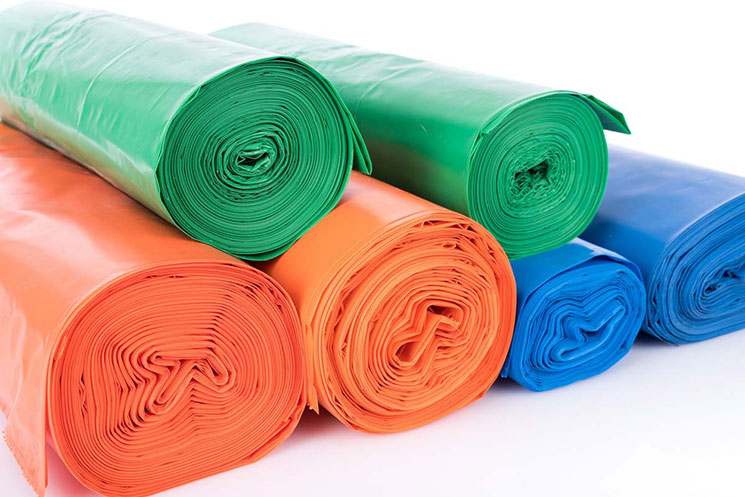
Click on the link below to read more:
Linear Low Density Polyethylene
Poly aluminum chloride is introduced in the consumer market with the industrial name of Poly Aluminum Chloride.
Other names of PAC include basic aluminum chloride, polybasic aluminum chloride, aluminum hydroxide, aluminum oxychloride, and aluminum chlorohydrate.
This product, abbreviated as PAC, is a widely used coagulant; which is widely used instead of two old coagulants, aluminum sulfate and chloroauric and it causes flocculation, reduction of TDS of water, clarification, removal of turbidity and instability of colloids. In terms of appearance, the PAC has 2 types: solid and liquid, which is solid poly aluminum chloride in the form of powder or crystal.
According to its production grades, it is produced and marketed in two colors, from milky white to bright yellow. Liquid poly aluminum chloride is produced in light yellow to reddish yellow color and can be edible or industrial. The pack is produced with 3 types of purity: 9%, 18%, and 30%.
Poly aluminum chloride is a polymeric and inorganic coagulant. Several applications of this technology have been developed over the past few years, including the treatment of drinking water, sewage, agricultural and industrial effluents, and wastewater.
This inorganic coagulant is very efficient in the world and forms stable compounds with many inorganic and organic substances.
This substance is used in the food, cosmetic, and leather industries, in the public sector, in drinking water purification and conditioning, in water purification processes for thermal power plants, regional power stations, steam boilers, and for swimming pool water purification mainly in the cold season.
During the separation and extraction of water impurities, this industrial material operates at high power and speed. China, Canada, America, Italy, France, and England are among the countries using poly aluminum chloride as a coagulant agent in their water purification systems.
Throughout Iran, this material replaces old coagulants (aluminum sulfate and chloroferric) in many industries.
Among the unique and special characteristics of poly aluminum chloride are having a long life, not changing the PH of the water, reducing consumption, coagulant amount, being strong and effective, producing little sludge or waste, high efficiency, ease and Ease of use, hygiene, reduction of water corrosion activity, reduction of costs of neutralization after coagulation, no temperature limit, efficiency, and reasonable price. Due to its higher purity percentage, higher molecular weight, and better coagulant properties, poly aluminum chloride is more commonly used than other coagulants and has many supporters.
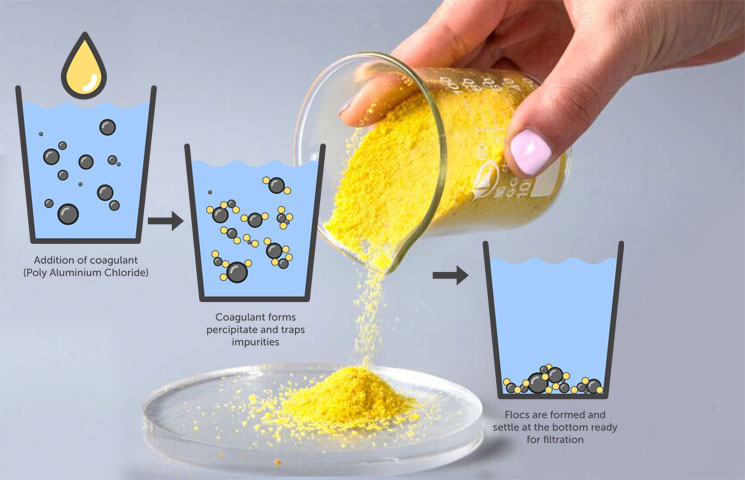
Click on the link below to read more:
Poly Aluminum Chloride












